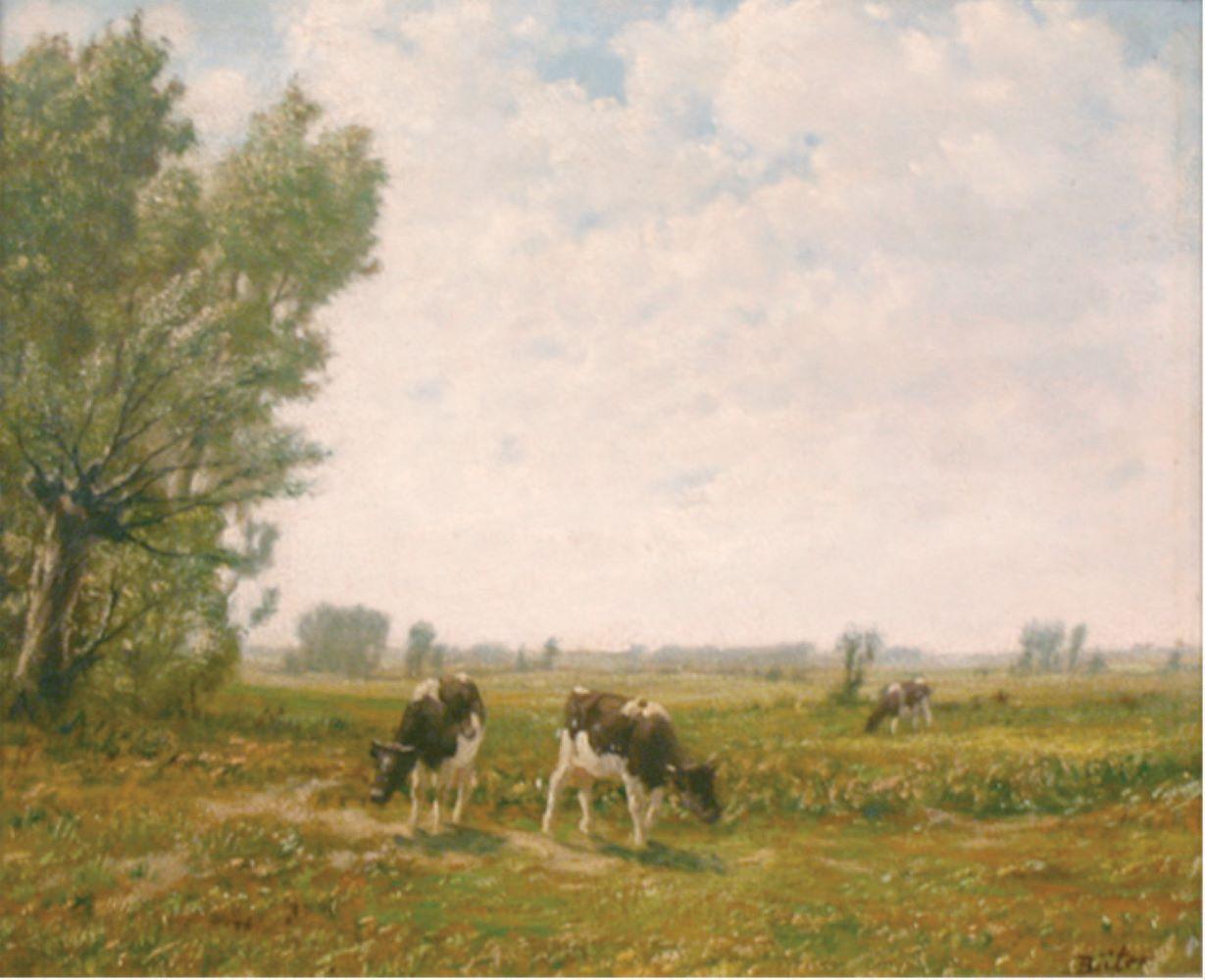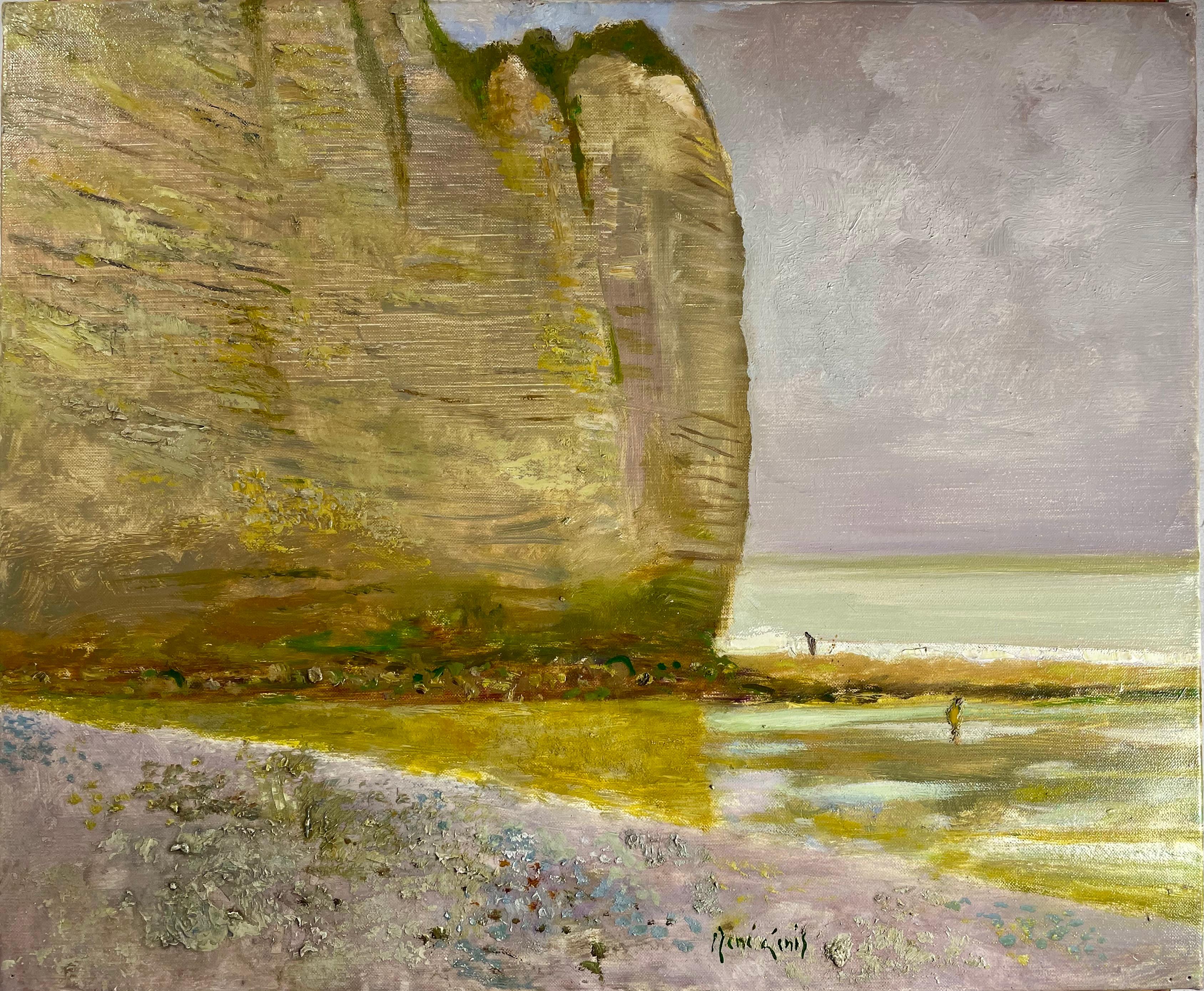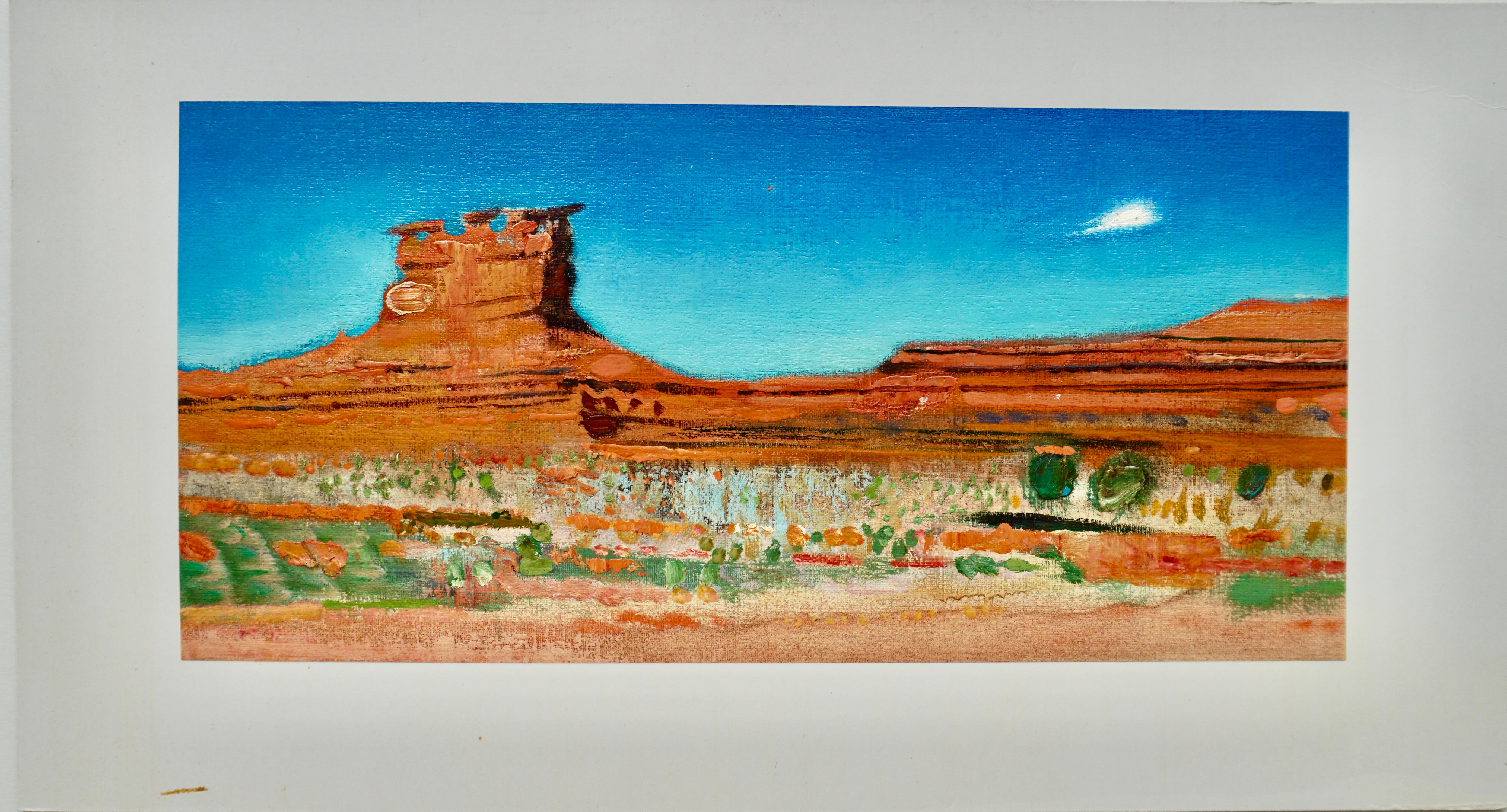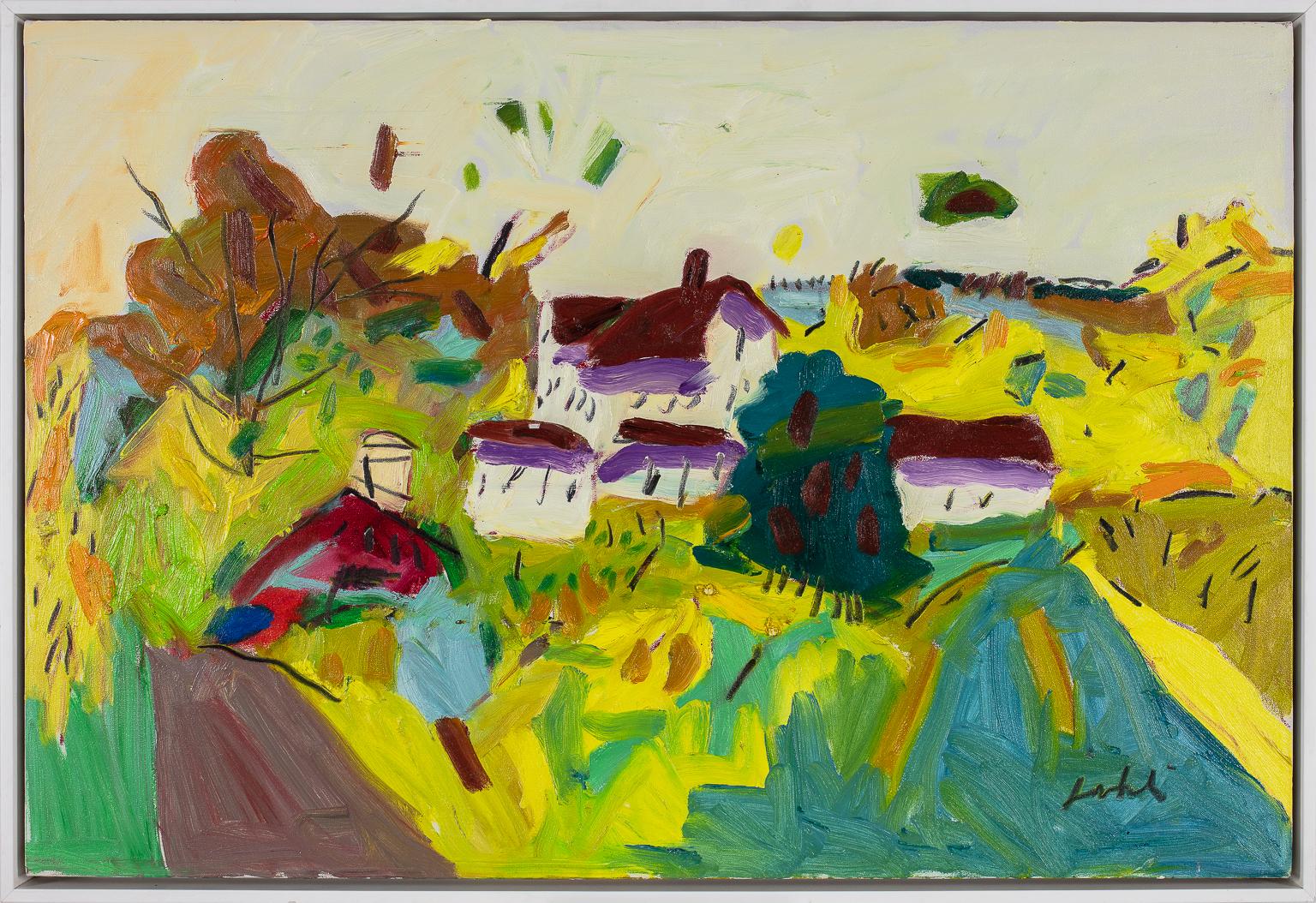Items Similar to European or American School Oil Painting; Boat on European Coast
Video Loading
Want more images or videos?
Request additional images or videos from the seller
1 of 7
UnknownEuropean or American School Oil Painting; Boat on European Coastc. 1860
c. 1860
About the Item
This captivating seascape painting showing two boats: one kidnapping a woman and her slave and the other, more distant is most likely from a European or American school. Although the artist is unknown, it is from the mid to late 19th century and depicts a European rocky coast. It shows the frantic escape for a kidnapping on a smaller boat off the coast at sunset. The almost fiery sunset and the gloomy grey clouds in the sky seems to signify the dramatic event happening in the painting. Comes without Frame!
- Creation Year:c. 1860
- Dimensions:Height: 9.5 in (24.13 cm)Width: 13.75 in (34.93 cm)
- Medium:
- Period:
- Condition:
- Gallery Location:Fredericksburg, VA
- Reference Number:1stDibs: LU2574212649282
About the Seller
5.0
Vetted Seller
These experienced sellers undergo a comprehensive evaluation by our team of in-house experts.
Established in 2001
1stDibs seller since 2023
Typical response time: Several days
- ShippingRetrieving quote...Ships From: Fredericksburg, VA
- Return PolicyA return for this item may be initiated within 7 days of delivery.
More From This SellerView All
- Oil landscape of Autumn ForestBy David JohnsonLocated in Fredericksburg, VAThis Hudson River School autumn landscape is done by the famed artist David Johnson. He studied at the national Academy of Design in New York. He was best known for the development o...Category
Mid-19th Century Hudson River School Landscape Paintings
MaterialsCanvas, Oil
- Oil Landscape of Palm TreeLocated in Fredericksburg, VAThis painting was bought from the artist's estate in Woodberry, CT and is signed verso. Eugene Savage studied at the Chicago Art Institute, the American Academy in Rome, and received his Masters of Art at Yale University. He taught at Yale for almost 30 years in Art and Architecture. Eugene Savage had many latin influences such as Diego Rivera and José Clemente Orozco. In the 1940s he spent his time painting Hawaiian murals of people and of more abstract Hawaiian...Category
Mid-19th Century Abstract Expressionist Abstract Paintings
MaterialsCanvas, Oil
- Southern Landscape Oil Painting Hudson River SchoolLocated in Fredericksburg, VACopyright 2023 Michael F. Meyer All rights Reserved. This painting, signed RSD on right side, has been verified by the late expert on Robert S. Duncanson, Joseph Ketner and comes with an authentication letter. This painting has exhibited and is published in Robert S. Duncanson and His Courageous Southern Travels. This painting is one of the many beautiful southern landscape scenes that Robert S. Duncanson painted in his courageous travels south. "Robert S. Duncanson born in 1819, was an African American Hudson River School artist who painted the south before the Civil War, until his death in 1872. Although widely famous during his lifetime, this forgotten artist’s courageous journey through the antebellum south has never before been exhibited or researched until now. His brilliance was in creating captivating landscape paintings that come alive to the viewer, by focusing on the minute details of nature and of the stories he wished to communicate. Robert Duncanson...Category
Mid-19th Century Hudson River School Landscape Paintings
MaterialsOil, Canvas
- Oil on Canvas Figurative Landscape of People Viewing RuinsLocated in Fredericksburg, VAThis 19th Century painting shows middle eastern men viewing classical ruins. The one in the foreground sitting alone, and in the back sitting together facing away from the ruins. Thi...Category
19th Century Other Art Style Landscape Paintings
MaterialsCanvas, Oil
- Landscape of Sailboat Racing Off the Coast Near the LighthouseBy Clement DrewLocated in Fredericksburg, VAClement Drew grew up in Kingston, Massachusetts, a coastal New England town. Early on he settled into a career as a marine painter. He augmented his income by working in a number of ...Category
Mid-19th Century Impressionist Landscape Paintings
MaterialsOil, Canvas
- Oil Landscape of Hawaiian Forest InteriorLocated in Fredericksburg, VAThis painting was bought from the artist's estate in Woodberry, CT and is signed verso. Eugene Savage studied at the Chicago Art Institute, the American Academy in Rome, and received his Masters of Art at Yale University. He taught at Yale for almost 30 years in Art and Architecture. Eugene Savage had many latin influences such as Diego Rivera and José Clemente Orozco. In the 1940s he spent his time painting Hawaiian murals of people and of more abstract Hawaiian...Category
Mid-19th Century Expressionist Abstract Paintings
MaterialsCanvas, Oil
You May Also Like
- Bernhard ButerLocated in Saint Augustine, FLArtist: Bernhard Buter (1883-1959) German Title: Rhinish Landscape Medium: Oil on Canvas Dimensions: Framed 19” x 21” , Unframed 11 x 13” Bernhard Buter paints agrarian landscapes i...Category
Early 20th Century Realist Landscape Paintings
MaterialsCanvas, Oil
- "Les Falaise Normande" (The Cliffs Of Normand)By René GenisLocated in Berlin, MDRene Genis (French 1922-2004) “Les Falaise Normande” / The Cliffs of Normand. A sea scape with high cliffs, the beach, and two fishermen. The cliffs are in browns, tans and olives a...Category
1990s French School Landscape Paintings
MaterialsCanvas, Oil
- "Monument Valley"By René GenisLocated in Berlin, MDRene Genis (French 1922-2004) Monument Valley. 1967. Beautiful oranges, browns, greens against a turquoise blue sky. Oil on canvas, laid on mat. Si...Category
Mid-20th Century Landscape Paintings
MaterialsOil, Canvas
- Early oil depicting the Great Fire of LondonLocated in London, GBThe Great Fire of London in September 1666 was one of the greatest disasters in the city’s history. The City, with its wooden houses crowded together in narrow streets, was a natural fire risk, and predictions that London would burn down became a shocking reality. The fire began in a bakery in Pudding Lane, an area near the Thames teeming with warehouses and shops full of flammable materials, such as timber, oil, coal, pitch and turpentine. Inevitably the fire spread rapidly from this area into the City. Our painting depicts the impact of the fire on those who were caught in it and creates a very dramatic impression of what the fire was like. Closer inspection reveals a scene of chaos and panic with people running out of the gates. It shows Cripplegate in the north of the City, with St Giles without Cripplegate to its left, in flames (on the site of the present day Barbican). The painting probably represents the fire on the night of Tuesday 4 September, when four-fifths of the City was burning at once, including St Paul's Cathedral. Old St Paul’s can be seen to the right of the canvas, the medieval church with its thick stone walls, was considered a place of safety, but the building was covered in wooden scaffolding as it was in the midst of being restored by the then little known architect, Christopher Wren and caught fire. Our painting seems to depict a specific moment on the Tuesday night when the lead on St Paul’s caught fire and, as the diarist John Evelyn described: ‘the stones of Paul’s flew like grenades, the melting lead running down the streets in a stream and the very pavements glowing with the firey redness, so as no horse, nor man, was able to tread on them.’ Although the loss of life was minimal, some accounts record only sixteen perished, the magnitude of the property loss was shocking – some four hundred and thirty acres, about eighty per cent of the City proper was destroyed, including over thirteen thousand houses, eighty-nine churches, and fifty-two Guild Halls. Thousands were homeless and financially ruined. The Great Fire, and the subsequent fire of 1676, which destroyed over six hundred houses south of the Thames, changed the appearance of London forever. The one constructive outcome of the Great Fire was that the plague, which had devastated the population of London since 1665, diminished greatly, due to the mass death of the plague-carrying rats in the blaze. The fire was widely reported in eyewitness accounts, newspapers, letters and diaries. Samuel Pepys recorded climbing the steeple of Barking Church from which he viewed the destroyed City: ‘the saddest sight of desolation that I ever saw.’ There was an official enquiry into the causes of the fire, petitions to the King and Lord Mayor to rebuild, new legislation and building Acts. Naturally, the fire became a dramatic and extremely popular subject for painters and engravers. A group of works relatively closely related to the present picture have been traditionally ascribed to Jan Griffier...Category
17th Century Old Masters Landscape Paintings
MaterialsOil, Canvas
- White FarmBy Zygmund JankowskiLocated in Gloucester, MAZygmund Jankowski (1925–2009) painted traditional subjects with exuberant irreverence for traditional rules of color, composition, and perspective. He disparaged imitation and deligh...Category
1980s Contemporary Landscape Paintings
MaterialsCanvas, Oil
- Autumn Landscape with PurpleBy Zygmund JankowskiLocated in Gloucester, MAZygmund Jankowski (1925–2009) painted traditional subjects with exuberant irreverence for traditional rules of color, composition, and perspective. He disparaged imitation and deligh...Category
1980s Contemporary Landscape Paintings
MaterialsCanvas, Oil





